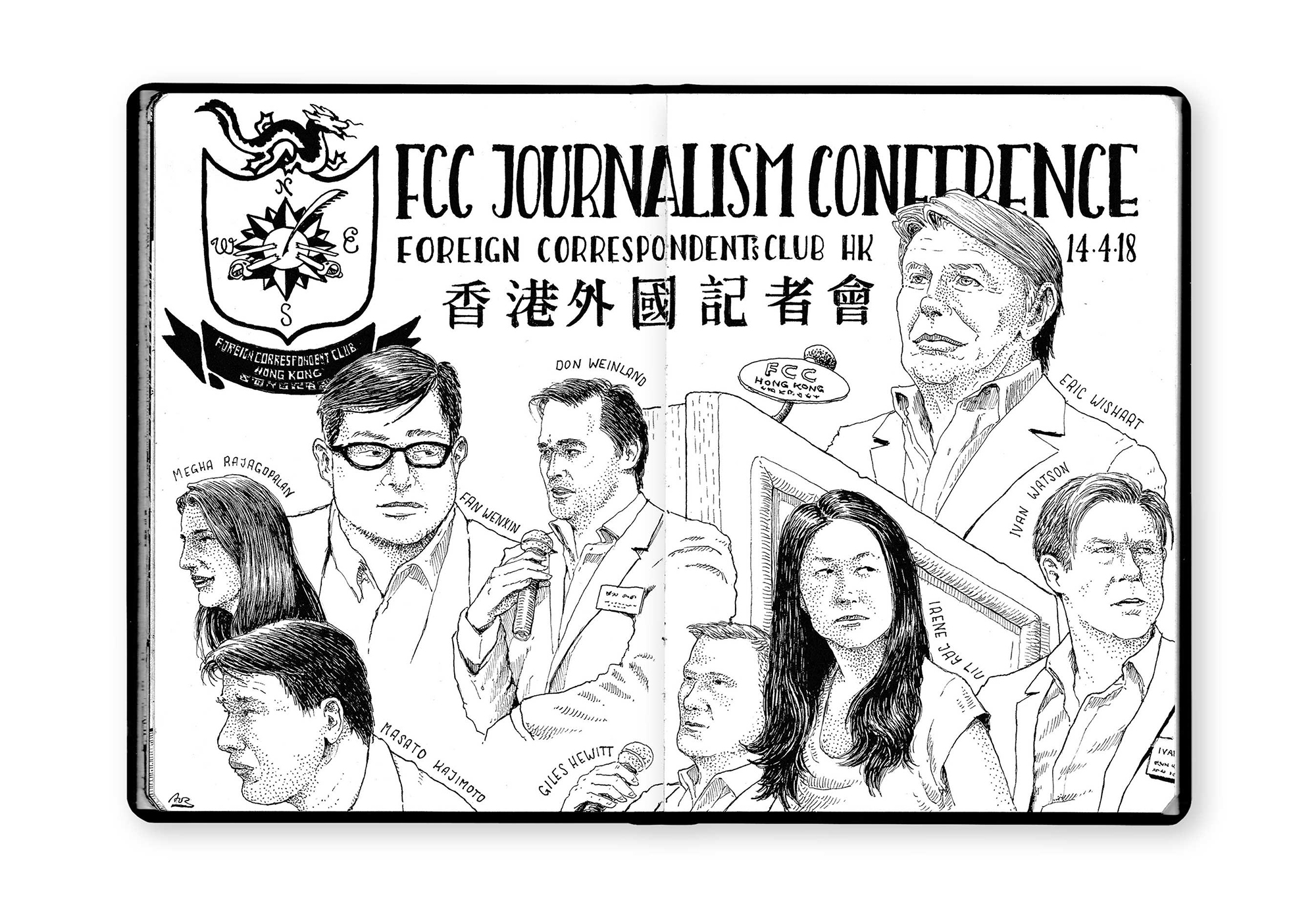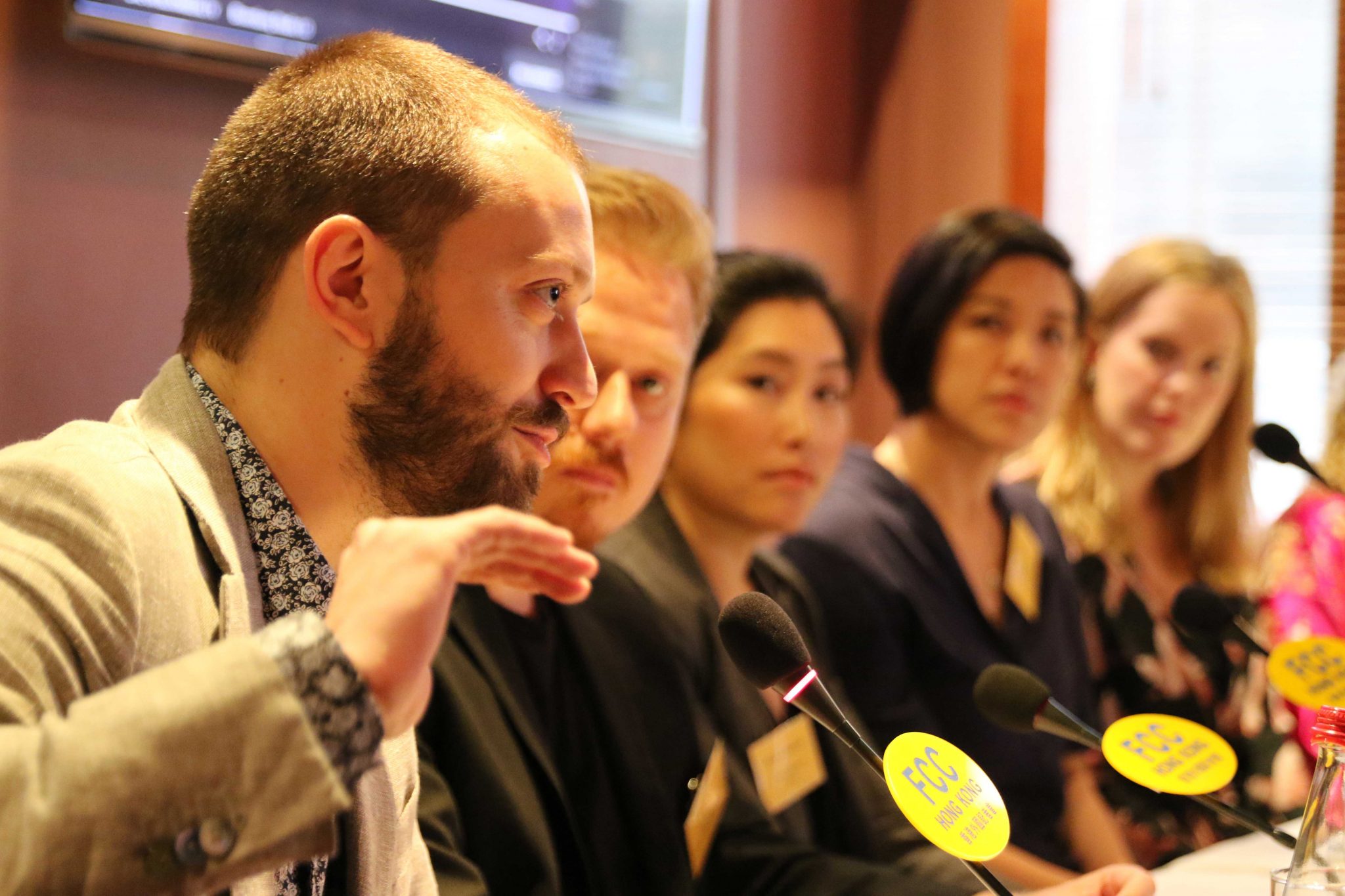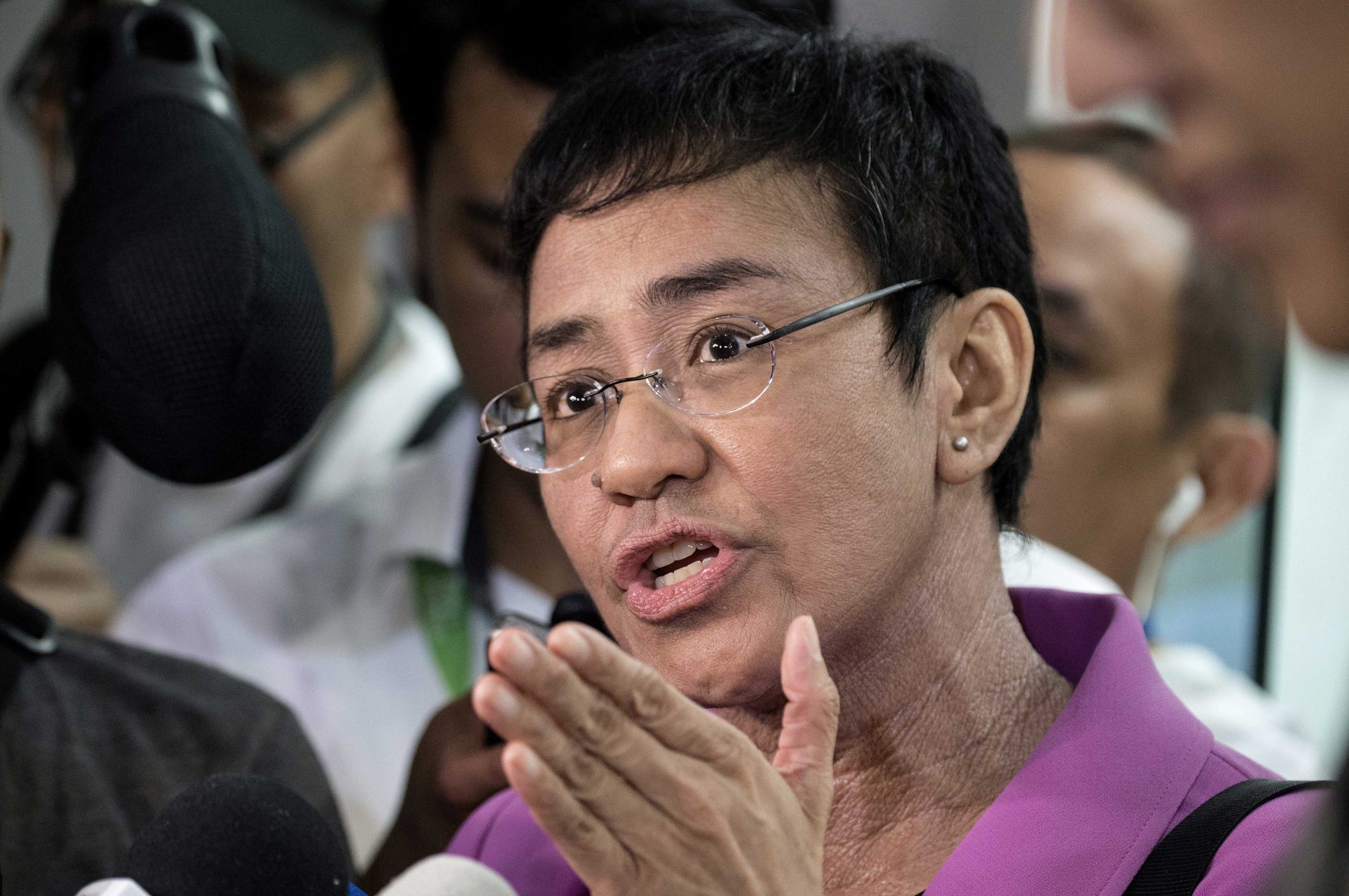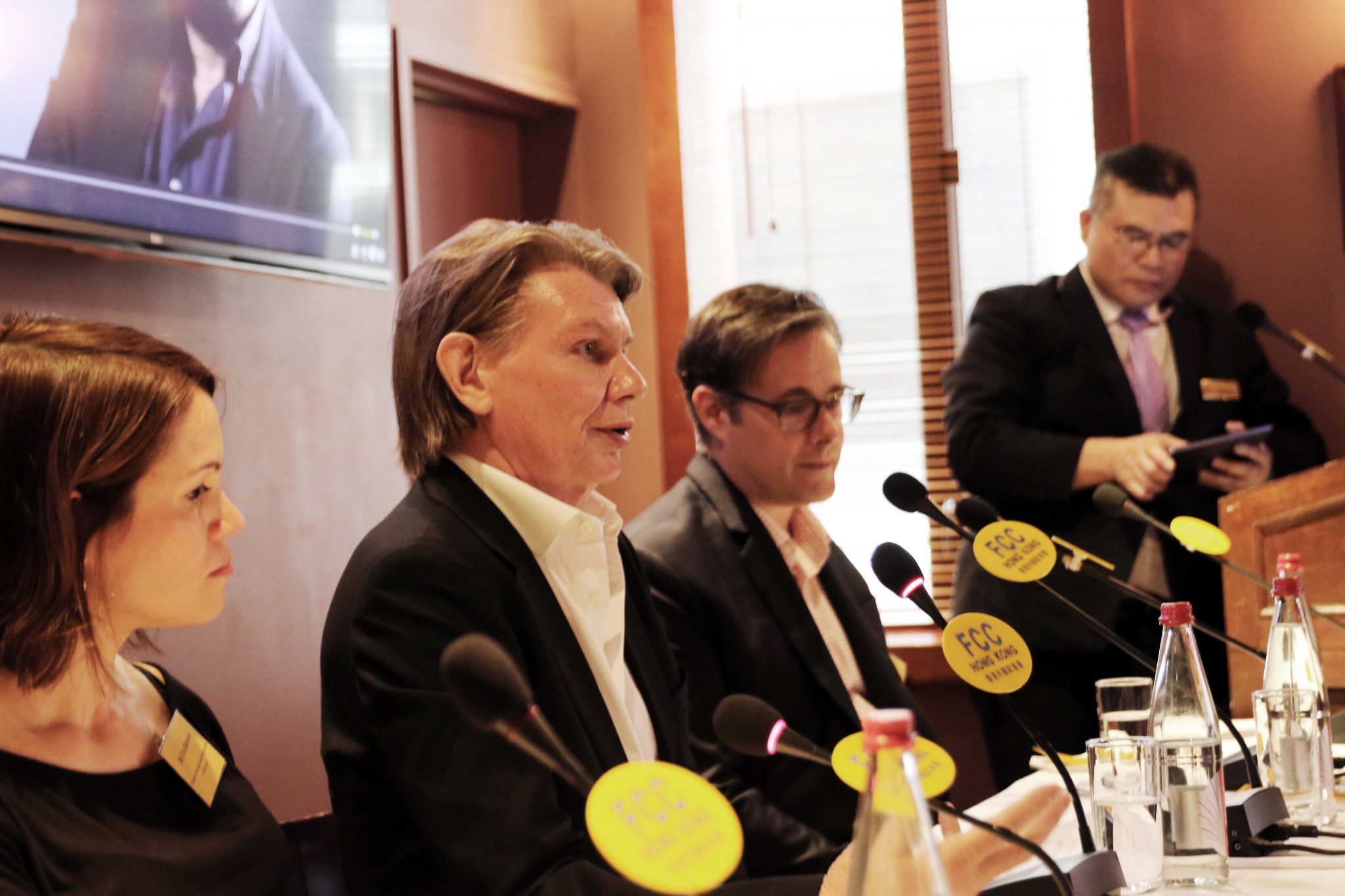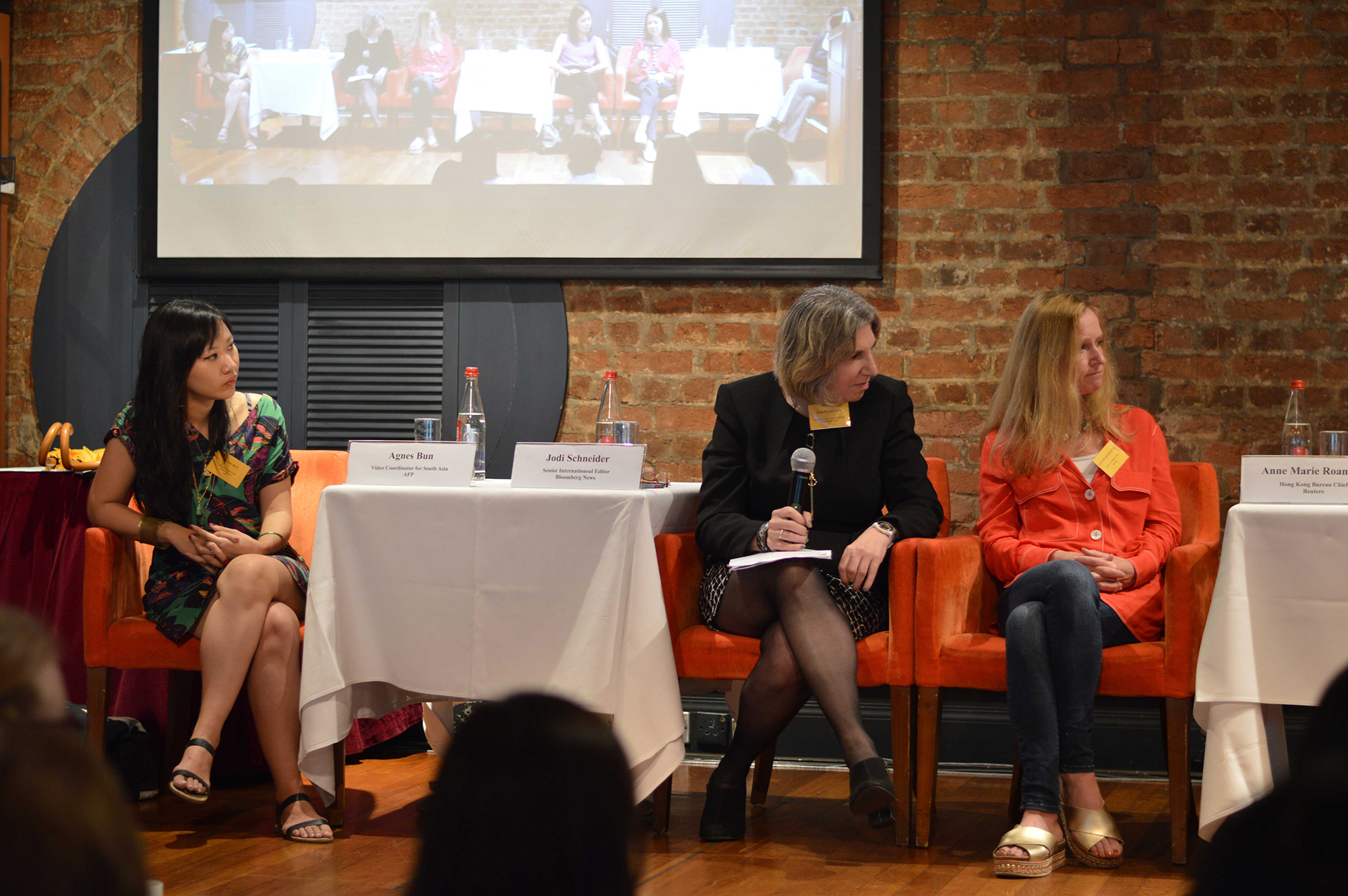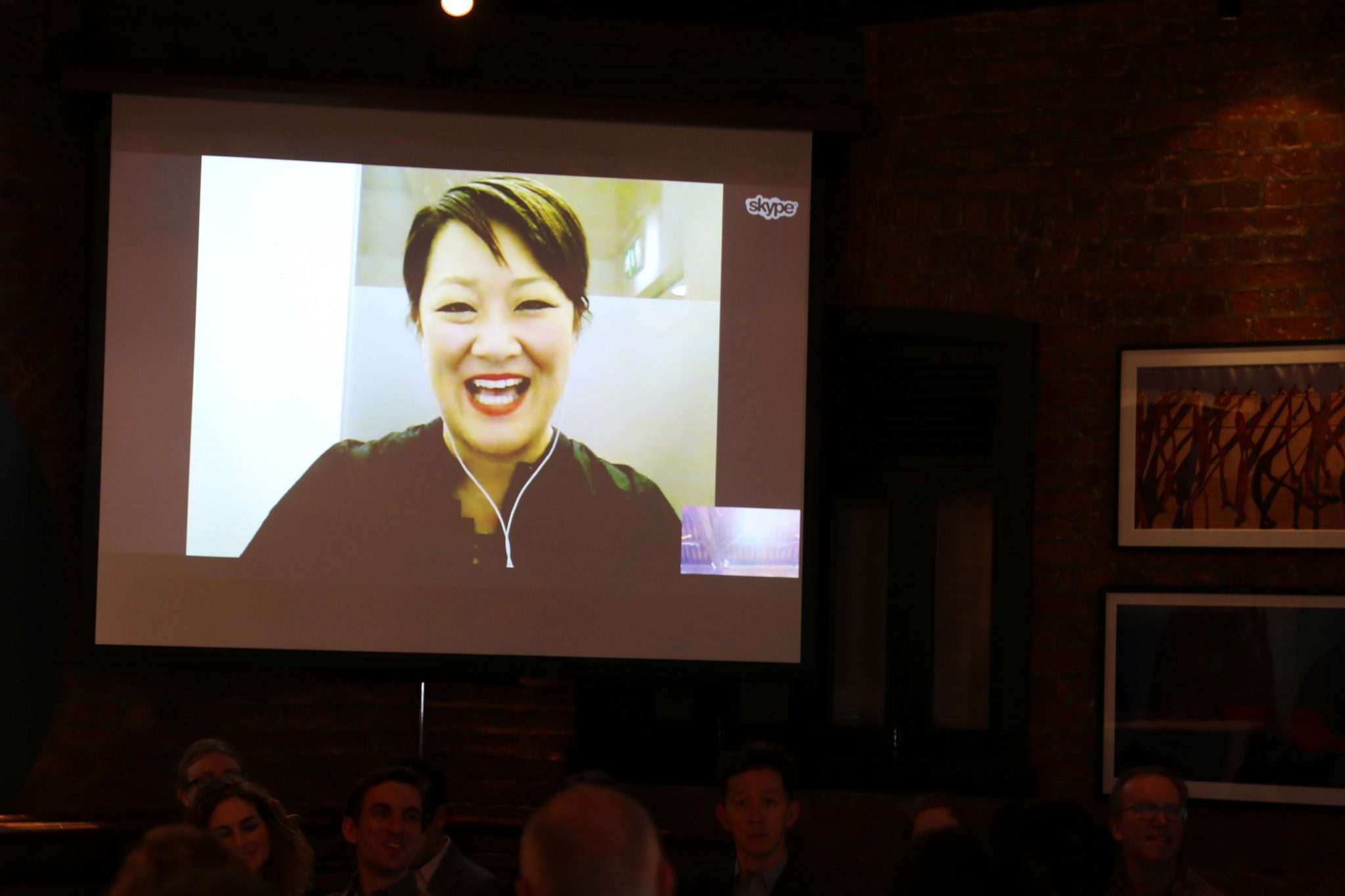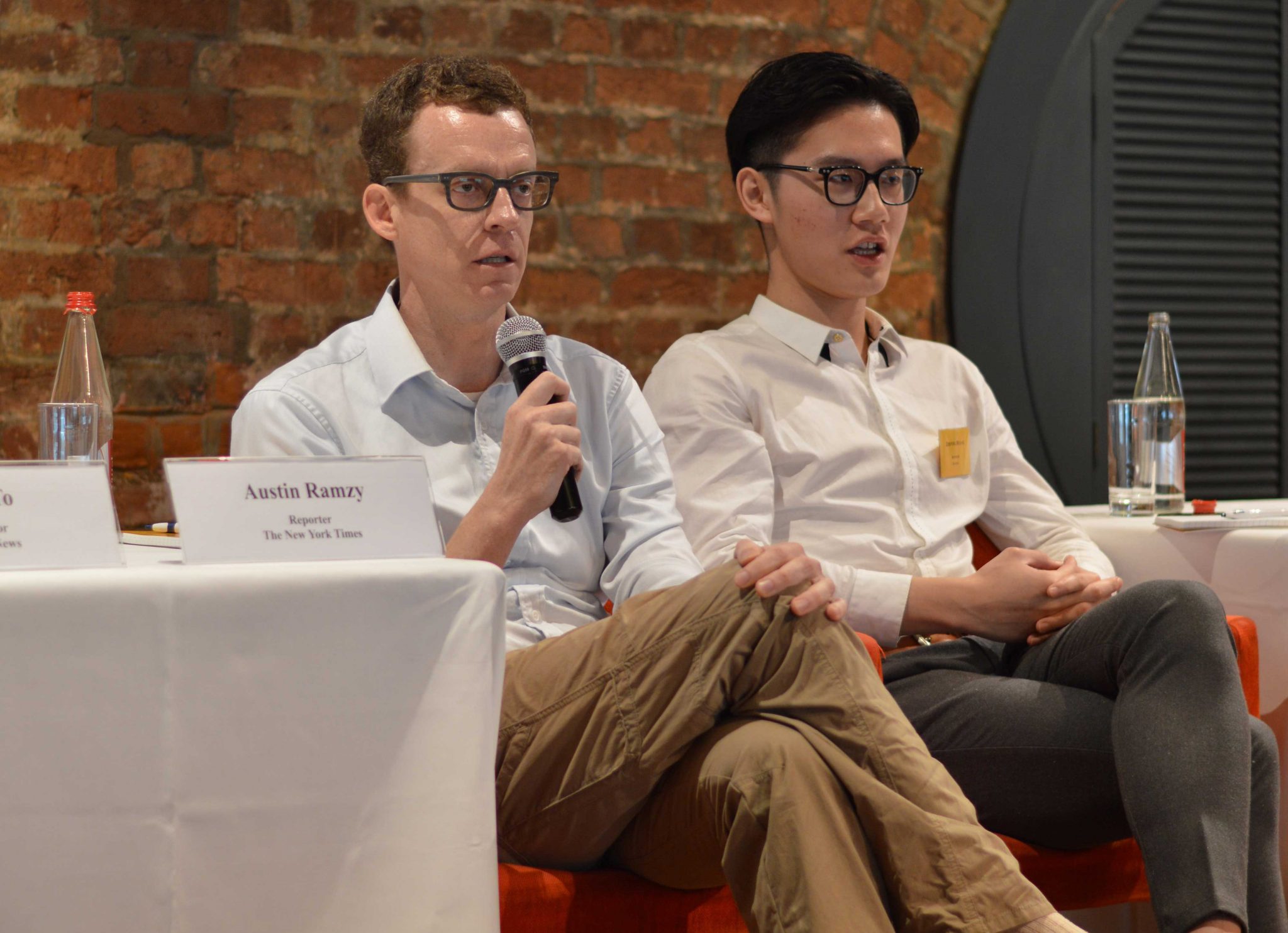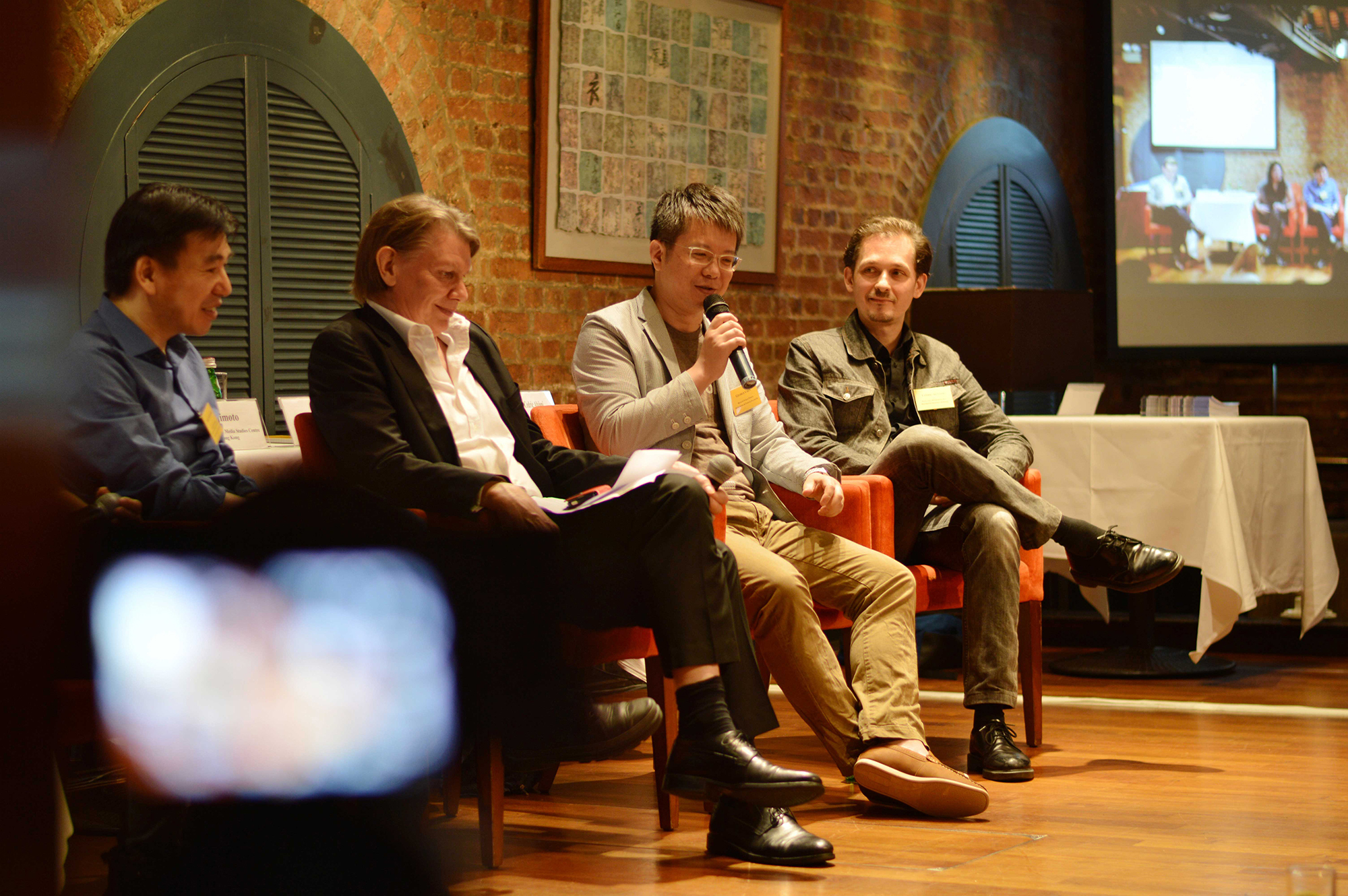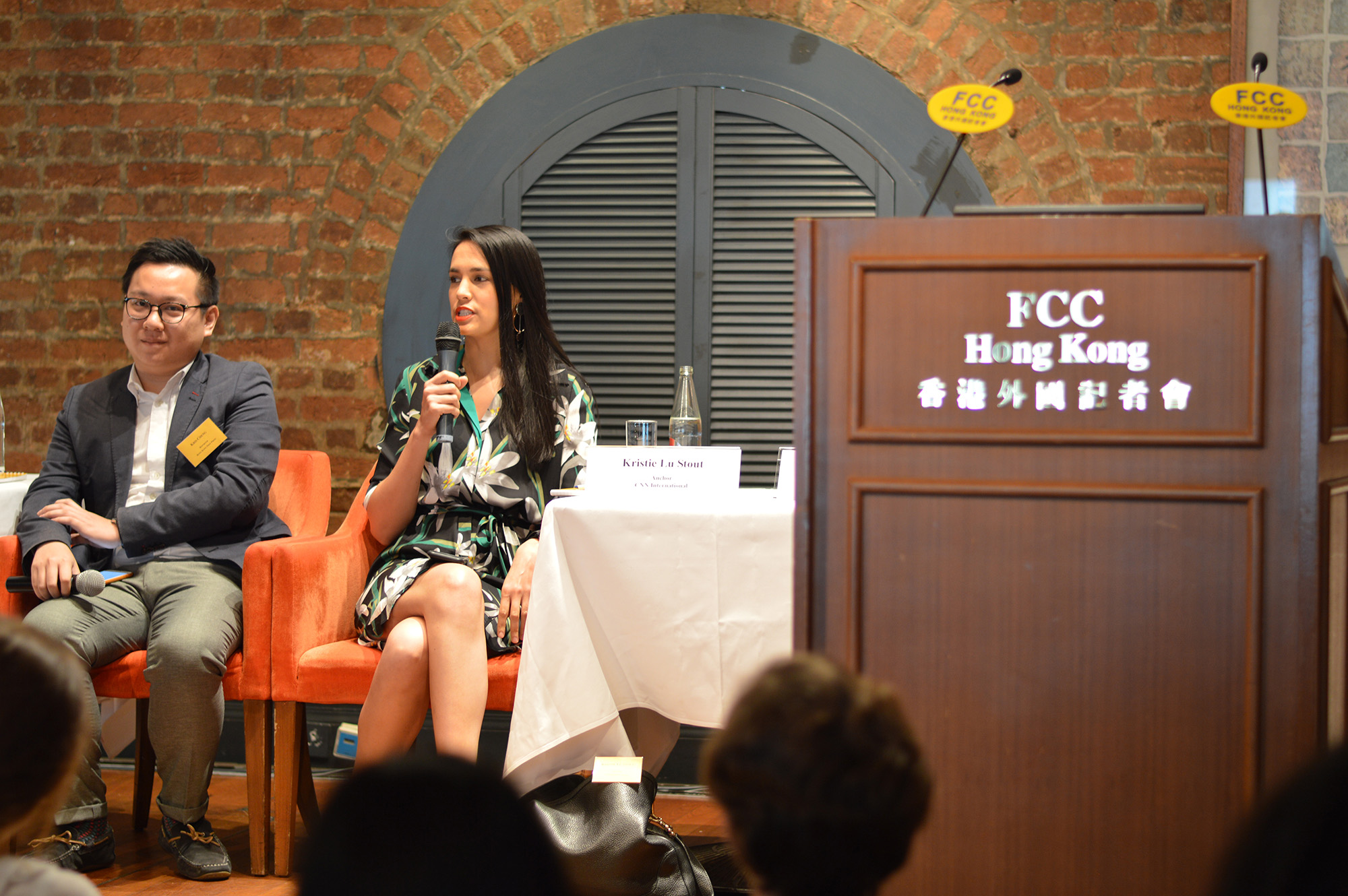
In case you missed it: The FCC’s 3rd Journalism Conference – at a glance
By Enda Curran, Conference Convenor, Sue Brattle and Morgan M. Davis
This year’s journalism conference brought together some of the region’s leading correspondents and editors with a deliberate emphasis on gender diversity and a push to involve a broader sweep of news organisations.
Speakers tackled key issues facing our industry from challenges for female journalists and how to avoid stereotypical reporting to dealing with authoritarian regimes.
A highlight was the keynote speakers Jean Lee and Maria Ressa, who addressed the conference via Skype. Both spoke with authority on North Korea and the Philippines and provided expert context and content.
Other panels included how to write a book, shoot video, deal with post-traumatic stress disorder, conduct investigative reporting, fight fake news and we had a rare gathering of some of Asia’s top editors on one panel.
Above all the event was a gathering of the FCC community in Hong Kong and beyond, of journalists and those who value the industry in these challenging times.
We’ll never claim it was a perfect event but the FCC remains committed to hosting the biggest speakers on the biggest issues in journalism and has already begun to plan for next year’s conference. We sincerely appreciated the support of the very large crowd on the day.
Here are short summaries of each of the day’s panels:
Meet the Editors
In sharp contrast to the panel on women in journalism, the “Meet the Editors” panel was dominated by white men, all wearing white shirts and blue jackets, joined by a single female editor, Gillian Wong, Greater China head for Associated Press. That lack of diversity ended up being much of the panel’s focus.
“It’s uncomfortable to be one of five guys in blue jackets up here,” said Kevin Krolicki, Asia Editor at Reuters. The editors agreed that diversity in hiring needs to encompass broader skills and backgrounds, be it gender or socioeconomic, to better round out reporting teams. “The more nationalism is rising in the world, the more we need diversity in the newsroom,” said Philippe Massonnet, Asia-Pacific director of Agence France Presse.
But as the panel turned to audience questions, the conversation became more pointed. While the editors were quick to say they’re all looking for the most driven, creative hires in the industry, there were very few tangibles given as to how diversity is being encouraged. Audience members expressed disappointment in what seemed to be flippant responses about the ability of anyone with a passion and skill to report and write to be hired as journalists, regardless of their background.
As each editor listed off the numbers or anecdotal evidence of gender gaps at their publications, it was clear that nearly every newsroom was lacking women in leadership positions. AFP was a rare exception, as Massonnet highlighted the company’s policy of having an even gender split on its board, as well as the nearly equal number of women running AFP bureaux globally.
“There should be more flexibility built into newsrooms,” acknowledged Wong. “It’s not always the loudest person in the room that has the best ideas.”
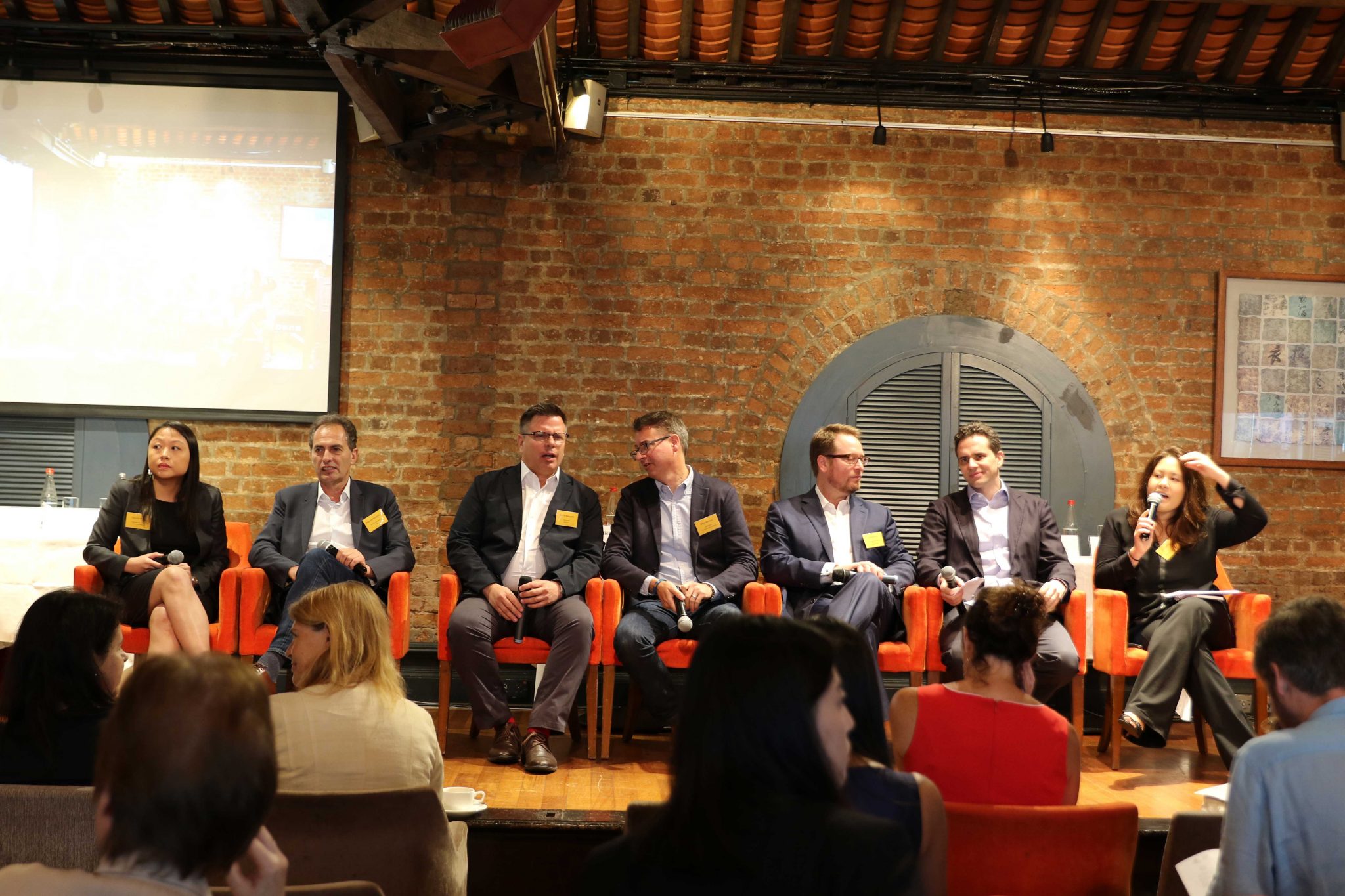 Gillian Wong, Associated Press; Philippe Massonnet, AFP; Kevin Krolicki, Reuters; Drew Dowell, The Wall Street Journal; Otis Bilodeau, Bloomberg News; Jamil Anderlini, Financial Times; moderator Natasha Khan, The Wall Street Journal
Gillian Wong, Associated Press; Philippe Massonnet, AFP; Kevin Krolicki, Reuters; Drew Dowell, The Wall Street Journal; Otis Bilodeau, Bloomberg News; Jamil Anderlini, Financial Times; moderator Natasha Khan, The Wall Street JournalInvestigative Reporting
Investigative reporting comes in many shapes and sizes, as the panelists on the investigative panel confirmed. For some reporters it’s a deep dive into data and number crunching. For others it’s an accumulation of hours of personal conversations. But for both, reporters need the time and backing of their publications to submerge themselves in the depths of a story.
For reporters hoping to do their own investigative reporting, organisation is key, the panelists agreed. Stories come from conversations, names in documents, and data points that may have appeared months or weeks back.
Like other sensitive topics, investigative pieces may be targeted by local officials as a threat. “It always comes in the form of a whisper, what you can and can’t do,” said Selina Cheng, reporter at HK01. Cheng said the HK01 team had been told to back off of stories, or even had articles deleted from the website without notice. In that vein, Wenxin Fan, a reporter at the Wall Street Journal, assumes that phones are tapped when he coordinates for an article. Likewise, encryption is essential for sending messages and emails.
Shooting Video: Creating an Image-led Story under Pressure
How do you shoot something you’re not supposed to? Paolo Bosonin, Head of Video Apac for The Wall Street Journal, said: “You need to prepare as much as possible beforehand.” Filming in Xinjiang, China, and North Korea last year, he said: “In North Korea you don’t have freedom of movement, you go by their rules and put yourself in someone else’s hands. Do you pretend you’re in normal conditions? We made video and also ran a piece with no audio and almost no editing.”
Rebecca Wright, Field Producer, CNN International, said: “A lot of the challenges are logistical – make sure everyone is fed, you’ve got petrol, equipment etc. But how do you show a plane that is missing? The Grenfell Tower fire in London was easier; you film the tower, although it was hard having weeping relatives around us. Technology has made things easier; you can film on your iPhone and go live on Skype.” Paolo agreed: “Ten years ago we worked with 12 cameras in trucks. Things have moved on quickly.”
There are less restraints in digital, but how do you illustrate stories about crypto-currencies, which get spikes in reading figures?
How about pressures of making a subject attractive visually or filling in time waiting for something to happen?
Pamela Ambler, Digital Reporter for Forbes, said: “You need a plan ahead of time if you’re waiting for a court verdict to come in. There are less restraints in digital, but how do you illustrate stories about crypto-currencies, which get spikes in reading figures?”
Digital offers exciting possibilities, said Mat Booth, Head of Video at the South China Morning Post. “It is a myth that people’s attention spans are so short. It is nice to let the story run up to 8, 9, 10 minutes. You can make an emotional connection more obviously than with a text article.”
Keynote Speaker – A conversation with Maria Ressa, CEO of Rappler
Via video link, Maria opened her talk with a short film of her journalists talking about the many ways they had been threatened with death and rape because of their work for Rappler in the Philippines. “We combine investigative journalism with technology to build communities for action,” she said. Maria was targeted by President Duterte in his State of the Nation speech in July 2017. “The government doesn’t like us because we are truly independent. We accepted the mission of journalism. So we ask the difficult questions. Duterte was the first president to be elected using social media; after his election in May 2016, that became weaponised. If people questioned killings on Facebook, they got clobbered; the attacks were very personal. By October 2016, we exposed these attacks on social media. After that we got 90 hate messages per hour.”
Power has moved onto the platforms, journalists are no longer the gatekeepers.
In a social media-obsessed country where the median age is 23, Rappler is more popular than most traditional news outlets. In March this year, Duterte banned its journalists from the presidential palace in Manila. Next he banned them from any event outside the palace. Maria said: “Is he afraid of questions? I think it is alarming. Trump as leader of the U.S. has helped people who want to quash the media.”
“Power has moved onto the platforms, journalists are no longer the gatekeepers,” Maria said in answer to a question from Eric Wishart about Press freedom in Southeast Asia.
Reporting Under Authoritarian Regimes
The panel highlighted the struggles of journalists reporting in countries where they, their colleagues and their sources face daily threats.
Expatriate journalists often find roadblocks to getting into an authoritarian-led country in the first place, as journalist visas are used as a tool to keep people out. But local journalists and sources face regular threats to the lives of their families, as well as themselves. “The real threat of getting sources arrested is something we think about every day,” said Emily Rauhala, China Correspondent at the Washington Post. Rauhala said that people who used to speak with her now won’t answer her calls. She said that she has to ask herself if a story is worth sending someone to jail.
Ben Bland, South China Correspondent at the Financial Times, spoke about his work in Vietnam, where he was required to have a local translator. The local assistants were required to report their work to the local police. As a reporter, such relationships take a lot of internal debates and negotiations, realising what local help should or should not be included on. At the same time, foreign journalists need to respect the local people they work with, and acknowledge that they are also doing work they are passionate about, regardless of the risks, the panelists said.
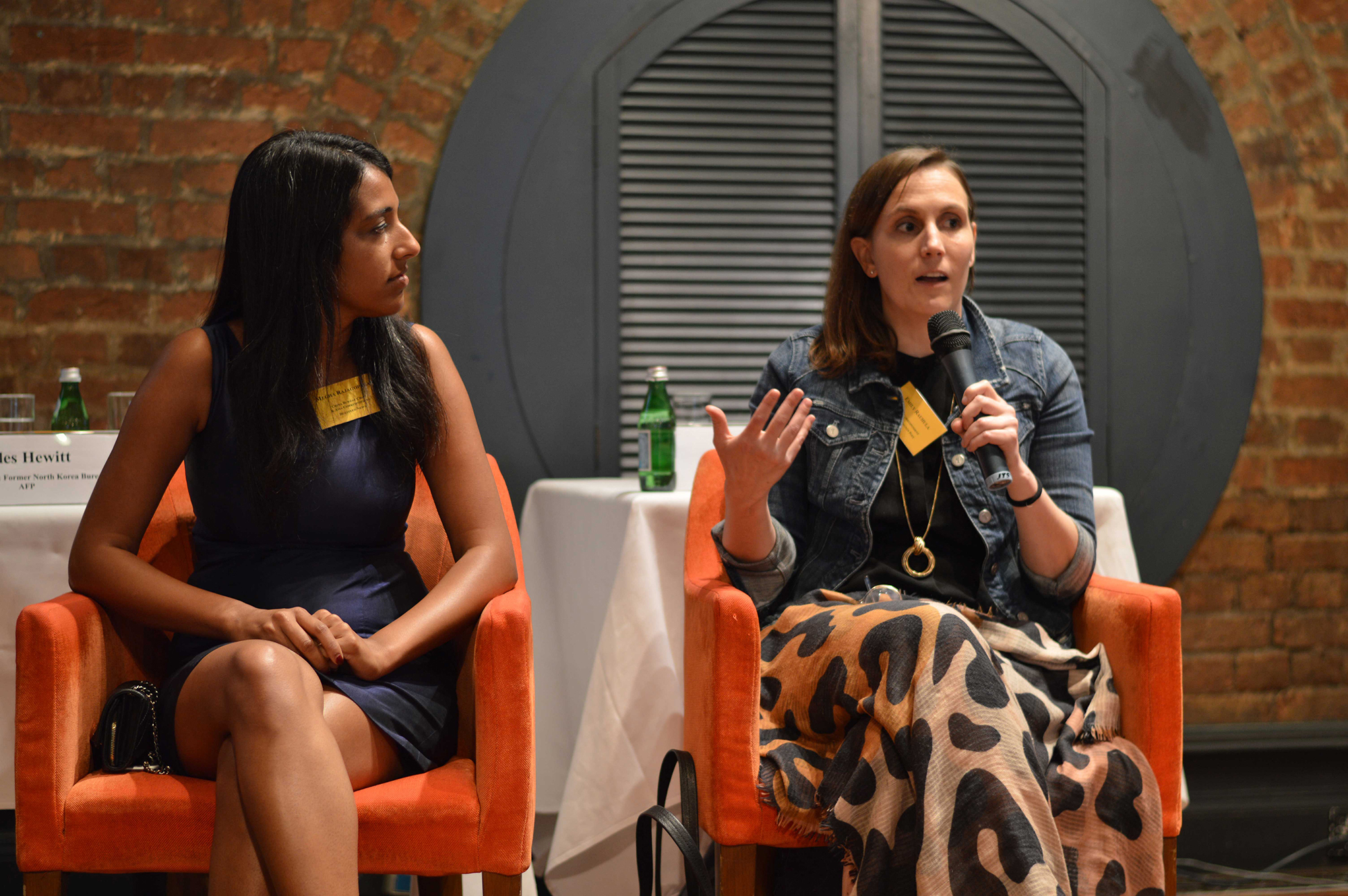 Megha Rajagopalan, China Bureau Chief & Asia Correspondent, Buzzfeed News; and Emily Rauhala, China Correspondent, The Washington Post
Megha Rajagopalan, China Bureau Chief & Asia Correspondent, Buzzfeed News; and Emily Rauhala, China Correspondent, The Washington PostDealing with PTSD
Moderator Eric Wishart, AFP Global News Management, said post-traumatic stress disorder is a big deal among people dealing with graphic photographs, for example, going through a beheading frame by frame.
Patrick Baz, AFP photographer, suffered PTSD after 30 years of “photographing death”. “Now I want to photograph life and beauty,” he said in a video in which he described vividly the day his feet “turned to concrete” and he sat on his sofa for eight hours, unable to move.
Dr Tess Browne, a Clinical Psychologist specializing in trauma, said: “PTSD doesn’t have to be from a firsthand experience. Symptoms include nightmares, intrusive memories, flashbacks, avoiding anything that reminds a person of their experience, avoiding anything that led up to the trauma, a change in the way of thinking, poor sleep, no concentration, becoming more irritable or aggressive…”
Douglas Schorzman, Deputy Asia Editor at The New York Times, said: “After 9/11, then war in Afghanistan and Syria, we started to take PTSD seriously. Reporters now have to build a schedule before going to a problem area. They confront questions such as their risk of being kidnapped, will they see bodies, and so on. They must check in at a certain time; this is important because a first sign of stress can be a reporter missing this. The Rohingya camps are a one-stop shop for PTSD, the most senior reporters have come back shaken to the core. Editors have to be available to reporters in the field, and they must listen to them. You can make an outrageous situation seem normal enough that they can cope, just by talking to them. You have to make time.”
Freelancers must not go into areas that AFP, Reuters etc don’t send their staff into, and a coalition of media has stopped taking their copy.
Wishart described the old macho culture of reporters “having a few drinks” to cloak their stress, and Douglas said: “Reporters are as afraid of editors as bullets.”
However, Dr Browne said there are effective talking therapies available, and hostile environment training has been proven to protect people in the field from feeling helpless.
Wishart added: “Freelancers must not go into areas that AFP, Reuters etc don’t send their staff into, and a coalition of media has stopped taking their copy.”
As to interviewing someone for a story who has gone through a trauma, Dr Browne’s advice was: “Get detail, but not too much; and don’t insist on knowing how someone thinks or feels. Stick to the facts.”
Women in Journalism
The only female dominated panel of the day, “Women in Journalism,” agreed experiences are varied, but sexism is very real. “In India, I’ve realised they don’t see journalists, they just see women,” said Agnès Bun, video coordinator for South Asia at AFP. In addition to the patronising comments of people doubting Bun’s abilities to carry her own equipment, Bun shared horror stories of being sexualized and groped while doing her job. “To me this is more traumatic than covering the war in Ukraine,” she said.
While women in the field face blatant examples of gender disparity, the women in the newsroom face a more subtle fight against the glass ceiling. In recent years there have been huge changes, with more women working in journalism in Asia and leading bureaus. But the gaps in newsrooms are often at the top, where white men still dominate. “You need people to identify women, and you need women willing to step up and take those positions,” said Serena Ng, Asia finance editor at The Wall Street Journal.
“Women need to aspire to do bigger things, better things,” agreed Anne Marie Roantree, Hong Kong bureau chief for Reuters.
“Women don’t aspire to senior positions and they need to.” The next steps for the industry will need to come from all fronts, as both men and women need to encourage women at all stages of their career.
How to Write a Book
Three authors, all journalists, and one publisher made up the panel, with FCC President Florence de Changy kicking off with this observation from her experience of writing Flight MH370 Did Not Disappear: “A book is not just a series of chapters, it has to build. It is easy to keep people’s attention for a short story, but long formats are a real challenge.”
Ways of writing varied, from Victor Mallet (River of Life, River of Death: The Ganges and India’s Future) who likes an early-morning start to Tripti Lahiri (Maid in India) who said: “I had to trick myself into writing most days. I’d tell myself I would write for 5 minutes, then hours would pass.”
People don’t buy local fiction writers. I want the author to have a platform for promotional work. And don’t be shy about what you have written.
On research, Lahiri said: “People didn’t know what my role was in the villages I needed to visit. Things that you don’t expect will happen.” Mallet, on the other hand, said: “People in India are fantastically helpful and happy to talk. But, it was difficult to get data, and often it was made up.” De Changy caught a once-a-week ferry to get to an atoll in the Maldives where people said they saw Flight MH370 flying low before it disappeared. “I closed that story line off, but research was so complicated. It was hard work.”
Can you make money from writing a book? Lahiri: “I didn’t expect to make money but my book has been a worthwhile project. Very rewarding.” Mallet: “Perhaps 1% makes money, but it costs me money because I fly to book fairs and so on.” De Changy: “A typical contract gives the author 8-10% of the sales price, so it all becomes about numbers. Compared with freelance money, it’s not bad.”
The last word goes to publisher Pete Spurrier of Blacksmith Books, Hong Kong: “People don’t buy local fiction writers. I want the author to have a platform for promotional work. And don’t be shy about what you have written.”
Dateline Pyongyang, Insights & Anecdotes from 10 years of Reporting in North Korea
Jean H Lee described her almost 10 years as the Associated Press bureau chief for the Korean Peninsula as “the best assignment in the world” via video link from Italy, where it was 3.30am. She opened the Pyongyang bureau for AP and said “it takes many, many trips to North Korea and to be on the ground for a long time to see North Korea as a whole”.
“I had to learn to protect myself in an environment where I was under surveillance. I suffered a form of post-traumatic stress disorder. In the West we have no idea what it is like to work under duress and where you may be accused of espionage at any moment.” Lee, a second-generation Korean-American, said: “A deep hatred of America comes with the ideology of the country. Living day in, day out with my North Korean colleagues has helped me to see past the propaganda. North Korea is still actively engaged in war; its outlook is that they are still at war with the United States.”
I put my journalism above patriotism, and North Koreans can never do that.
South and North Korea have been under threat of war for decades, and although South Korea is not the target of the North’s missile testing, it is in harm’s way. “But journalism is a business and the story of North Korea as a threat plays well.”
She went on: “One of my objectives in opening the Pyongyang bureau was to be on the ground without relying on the government’s invitation. And where I pick and choose the people I interview. We are not seeing much coverage outside that which is controlled by the government.”
Of the future, Lee said: “I put my journalism above patriotism, and North Koreans can never do that. The younger South Korean generation doesn’t want unification. They don’t accept having to pay for unification. They’ve been separated for 70 years so this becomes harder and harder.”
Confronting Stereotypes
Kristie Lu Stout, CNN International anchor, opened the panel with this observation: “We have to be really careful about the stories that we chose to put on air because of the power of journalism. It’s a cliché, but it is true.” Stereotypes discussed ranged from the political to gender, race, age, social issues and visual triggers.
Kris Cheng, a reporter with Hong Kong Free Press, said: “People in Hong Kong feel we have too much Joshua [Wong, student activist]. Can you name one of the 13 New Territories’ land protestors? We need to get to what common people are thinking, rather than just what the leaders are thinking. Caged homes are an issue but they are an extreme case; brownfield lands once used for industry that could be used for housing is an ignored issue. But of course, caged homes are photogenic.”
The only way not to be criticised is not to report anything.
So when issues are important but not appealing, how do we illustrate them?
Elaine To, photo editor at Bloomberg News, said: “This year, for the National People’s Congress in China, we used a male and a female photographer. We need to complement rather than just illustrate what the words are saying.”
Stereotyping attracts criticism, and Zheping Huang, a reporter with Quartz, said: “Working as a Chinese-speaking reporter on a Western publication, I get criticism in both languages.” To which Austin Ramzy of The New York Times retorted: “The only way not to be criticised is not to report anything.”
So how to achieve balanced journalism? Elaine To said: “I struggle to find women photographers in Hong Kong. I am not comfortable with balancing the numbers for the sake of it, and there is a lot of work to be done.”
Fighting Fake News in Asia
“Fake news” is a phrase we hear all too often, but actual “fake news” exists and it is a threat to the integrity of journalism, as well as the people it targets. “[Fake news] gives an excuse to the government to tamp down on information flow,” said Masato Kajimoto, assistant professor at the journalism and media studies centre at the University of Hong Kong.
The challenge of fake news isn’t new, but the digitalisation of news has changed things. Programs like Photoshop can quickly alter images, others can even change videos to put new words in people’s mouths. But there’s no silver bullet to stopping fake news, the panelists agreed. The public needs a combination of media literacy, third party fact checking and technology to spot the lies.
As professionals we cannot avoid our own responsibility.
“People already don’t trust journalists,” said Iain Martin, Asia Pacific editor at Storyful. Consumers assume that journalists have agendas, and despite proof otherwise will put their faith in the wrong places. Part of the issue facing journalism is the lack of definition of “real media”, argued Cedric Alviani, East Asia representative of Reporters Without Borders.
Without an international standard for the industry, it’s easier for governments to challenge media companies and publications. Having an industry whitelist of acceptable and trustworthy media sources can go a long way. “As professionals we cannot avoid our own responsibility,” said Alviani.

